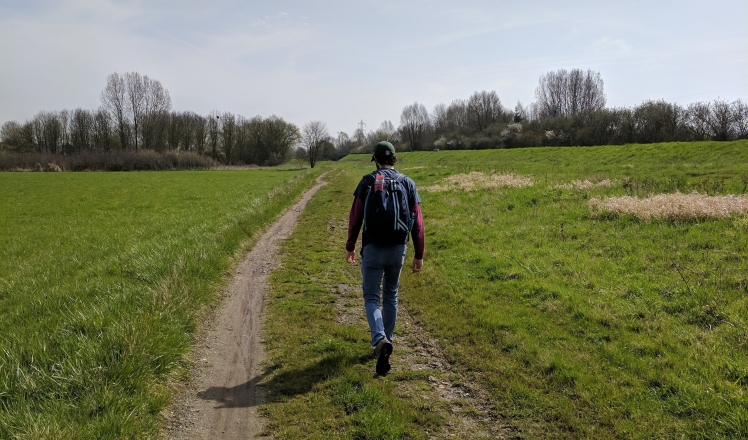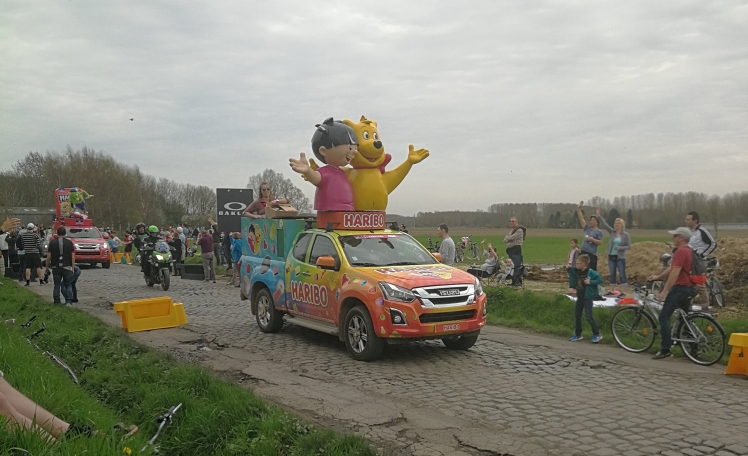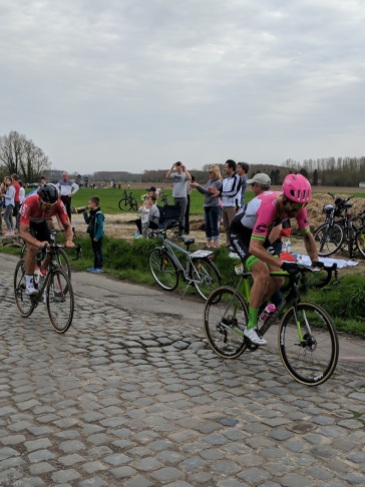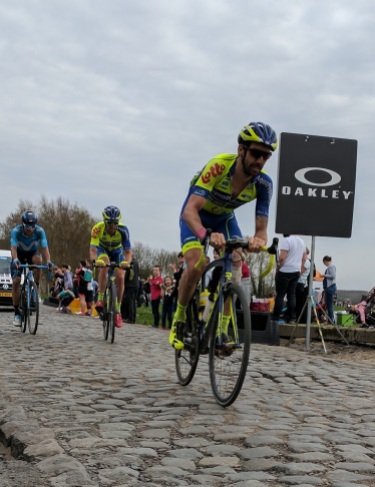To refer to the cobbles of Paris-Roubaix as bone-rattling or teeth-chattering is to assume that you have any bones or teeth left once you’ve submitted to them. Indeed, riders can be left with teeth resembling the disconcertingly spaced cobblestones with cavernous voids between each unit, or with a body feeling as fragile and hollow as their bike sounds as it pounds over the pavé.
An introduction for the non-fan: Paris-Roubaix, also known as the Hell of the North, is a one-day cycling race in Northern France over some notoriously ragged, often ancient, narrow cobbled roads – and to the non cycling-fan, seems like a bloody stupid thing to do. “Why don’t they just ride for 260km with their arm stuck in a toilet u-bend? It’ll be just as uncomfortable and pointless!” This my father postulated when he learned that cyclists had been abusing themselves like this for over a century.

Indeed, it does seem foolhardy beyond reason, but competitive cycling stems from a tradition of superhuman feats of endurance and pain toleration that extends into the modern era like no other sport. Bike racing at the top level is a war of attrition. We’ve moved on from the days of riding wholly unsuitable fixed-gear bikes over mountain passes, but it’s important that some things remain difficult for the sake of being so. Paris-Roubaix is just that, difficult, and was something I had to see for myself.
I owe much to my wife for putting up with my interests/obsessions, especially when it entails standing in a field on our wedding anniversary weekend. With the pavé being only a short excursion from our Lille hotel (2 train lines, 10 stops and a 90 minute walk) it seemed silly not to go, and even sillier not to arrive five hours early.

Riding the sportive the day before would’ve put excessive strain on my marriage, let alone my body and bike, so I was content to just watch on the Sunday. I lived vicariously through others who did ride however, marvelling at the man who rode 85 kilometres on a broken bike after the cobbles at the Arenberg trench were violent enough to snap his seatpost.
The decidedly tamer cobbles where we sat ourselves for the day were still causing problems – and this was when the professional riders were still four hours away. Spectators with mountain bikes and suspension to boot opted to dismount and push, and dogs walked along the edge so as not to lose a paw in the gaps between each stone. One man kicked aside a small pebble – I’m sure the riders thanked him for that afterwards.
Some spectators fully embraced the spirit of trial by cobblestone, with the elderly locals riding cruiser bikes at 3mph, feeling every stone send jolts through their bodies and unintentionally ringing their bells. Parents, evidently with grand plans for their children to one day win this race, conditioned their unwitting offspring by bouncing their prams over the pavé. If this didn’t wake them, surely the approaching helicopters did.
Up to this point I had busied myself with the live feed on my phone, following the race and giving important updates to Abbé, for which she was very grateful. After the promotional vehicles had rolled through throwing free crap at spectators, the police motorbikes signalled the start of the race proper.

The little fangirl came out in me as I saw Peter Sagan, the World Champion resplendent in his rainbow stripes, lead in Silvan Dillier, the Swiss champion. I am used to seeing them as two-inch figures on my Eurosport stream on my laptop, so to see them in the dusty flesh made me lose it.
“Allez Peter!” I shouted, making myself cringe with a faux-French accent that inadvertently slipped out. I suddenly felt like a fraud in my rainbow striped cap but was too busy timing the gap to the next group to take it off. “Cinquante seconds!” I screamed in the face of Greg van Avermaet, whether or not he wanted it.

I saw the Tour de France fizz by on home roads in 2014, but foolishly took photos for much of it and never fully immersed myself in the race atmosphere. This time was different. 250 kilometres into one of the toughest races on the calendar, I saw riders on the ragged edge and it was inspiring.
From stories and television coverage, you know Paris-Roubaix is a trial like no other, but up close the torment is palpable – a dire jackhammer purgatory with no visible ending. Pain is smeared across the faces of the riders – mouth wide open eating dust; shoulders bobbing and jarring as riders struggle to attain a workable rhythm; wrists and arms desperately trying to absorb some of the shocks smashing through a bike that often leaves the road surface entirely.

My child-like state continued well after all the riders had passed: I didn’t stop talking about the race, I paused Eurosport to see myself on TV and I thought to myself, “When I grow up, I want to be a cyclist.” It’s such a shame that I am grown up and that twenty hard miles following my friend Matt’s wheel on smooth roads makes me nearly bring up my breakfast.

Despite it being 95% picnic and 5% action, I cannot recommend a better free day out than being a spectator at a cycling race. It encompasses all that is great about the sport – an open and welcoming atmosphere free to all, witnessing heroic feats of physical strength and total immersion in sporting drama – all played out on a stage that anyone can use. If my wife can sit in a field with loads of spiders for five hours and still have a good time, anyone can.




After reading that lovely article about you and your wife I noticed that there were cobble stones in the background of your selfie. I thought nah no way are people cycling long distances on cobble stones, it must just be that bit! Didn’t know this was a thing until reading this post 😄
“To refer to the cobbles of Paris-Roubaix as bone-rattling or teeth-chattering is to assume that you have any bones or teeth left once you’ve submitted to them. Indeed, riders can be left with teeth resembling the disconcertingly spaced cobblestones with cavernous voids between each unit” 😂
^^^ total laugh out loud 😂😂
LikeLike